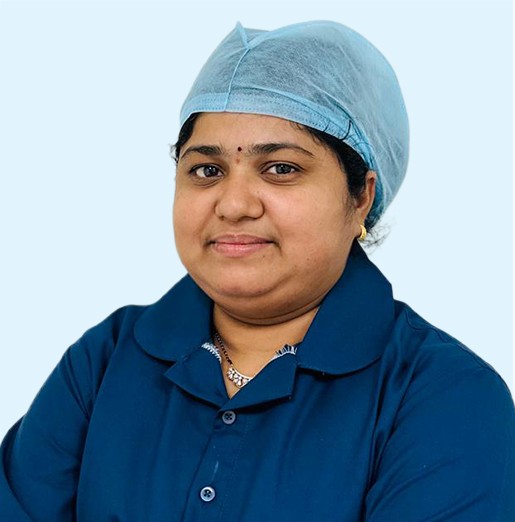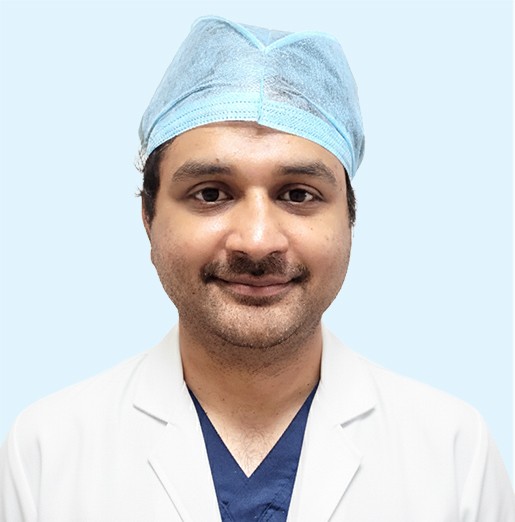The KIMS Rehabilitation Medicine Department is dedicated to helping patients regain their highest level of functioning following a stroke. As members of the Primary Stroke Center, our inpatient rehabilitation team is comprised of licensed physical therapists, occupational therapists, speech language pathologists and a physiatrist. They work closely with the stroke units, case managers, social workers and advanced practice nurses to transition patients to the next phase of their rehabilitation which could include services by KIMS Home Care and/or KIMS Outpatient Rehabilitation Medicine Department. Rehabilitation assessments can start as early as a patient’s time in the Emergency Department. For all patients, the rehabilitation therapy of all patients who have experienced a stroke starts at the bedside as they are recovering in our Neuroscience Intensive Care Unit or the step-down inpatient unit.
A personalized plan of care is developed for each patient’s individual needs. Inpatient therapy is available 7 days a week, but is provided on a customized schedule as determined by the patient’s medical status and ability to participate in therapy. Each patient’s own plan of care determines what therapy is appropriate for their level of function.
Physical Therapy
Every stroke patient is evaluated for their overall functional ability. This includes range of motion, muscular strength, sensation, and cognition (the ability to understand, follow directions, and speak). The therapist also assesses sitting and standing balance, coordination, movement from the bed to a chair and the ability to walk. Treatment sessions may include motor relearning, functional activities, e.g. sitting, standing, balance training and walking with assistance, if appropriate.
Occupational Therapy
An occupational therapy evaluation consists of an assessment of functional abilities in the areas of fine and gross motor arm function, sensation, cognition, visual perception and activities of daily living. Therapy will include a customized treatment program possibly consisting of strengthening and coordination exercises, activities to increase visual and thinking skills, compensatory strategies for dressing and recommendations for adaptive equipment.
Speech-Language and/or Swallowing therapy
Our speech-language pathologists assess the patient's ability to swallow as well as speech abilities, including forming words, articulation, aphasia, apraxia, and cognitive deficiencies. Therapy is individualized and may include swallowing therapy, facial exercises, tongue exercises, speech therapy, and the use of communication boards, alternative language devices, and computer programs.
Physiatrist Consultations
A board-certified physiatrist (a physician specializing in rehabilitation medicine) is available for consultations, if requested by the attending physician or neurologist.
Common medical conditions of patients admitted to the NCCU include:
- Acute ischemic stroke
- Intracranial hemorrhage
- Subarachnoid hemorrhage
- Cerebral aneurysm
- Cerebrovascular malformations
- Coma
- Encephalopathy
- Hydrocephalus
- Brain and spine tumors
- Traumatic brain injury
- Acute spine injury
- Seizures/Epilepsy (prolonged or continuous)
- Severe or deteriorating demyelinating illness
- Meningitis
- Encephalitis
- Spinal infection
- Guillain-Barre Syndrome
- Neuromuscular disorders (Myasthenia Gravis)
- Autonomic instability
- Recent major neurosurgical procedures for: carotid artery surgery ~ neuro-endovascular procedures - head and neckpathology
Subarachnoid Hemorrhage (SAH)
This type of bleeding in the brain occurs in the membranes that surround the brain andis typically due to trauma or the rupture of an aneurysm. An aneurysm is an abnormal ballooning of an artery that most patients are born with. Smoking, high blood pressure and cocaine use can contribute to the formation and growth of aneurysms. Most aneurysms rupture when patients reach age 40-60. Aneurysms should be repaired as soon as possible either with surgery or endovascular coiling. The next 3-14 days after aneurysm rupture represents the vasospasm period. During this time, other brain vessels can become irritable and spasm or clench up. Spasm limits the amount of blood that can pass through that vessel to supply nourishment to the brain. In the worst case scenario, stroke can occur due to vasospasm. Neurointensivists carefully watch patients for the development of vasospasm so they can intervene with medical or endovascular treatments to prevent stroke. Most subarachnoid hemorrhage patients will spend at least 1 week in the NICU. Outcome after SAH depends primarily on the patient’s age, his or her clinical status at presentation (depth of coma etc) and the size of the aneurysm that ruptured.
Intracerebral Hemorrhage (ICH)
ICH is another type of bleed in the brain that occurs within the brain tissue itself. ICH is usually due to high blood pressure, vascular malformations (abnormal tangle of blood vessels) in the brain tissue, brain tumors that bleed, blood thinners, or an entity known as amyloid angiopathy which implies vessel abnormality that occurs in older patients. Some types of ICH are treated with surgery, though most are not. Intracerebral hemorrhages can rupture into the fluid filled spaces within the brain called the ventricles. When this occurs patients often need drainage of this fluid and blood through a tube placed through the skull and into the ventricle. Prognosis after ICH depends on the size of the bleed, the presence of intraventricular blood, the clinical condition of the patient at presentation, the age of the patient and the location of the blood.
Traumatic Brain Injury (TBI)
TBI can result from blunt trauma (falls, motor vehicle accidents etc), or penetrating trauma (such as gun shot wounds, stab wounds etc). There are many types of brain injury following head trauma including bleeds around the brain such as subdural or epidural hemorrhage and injury to the brain tissue itself such as contusions or bruising of the brain. Rapid acceleration- deceleration injury (as in motor vehicle accidents) can cause shearing of the brain tissue which is called diffuse axonal injury. Elevated pressure in the skull is a serious consequence of TBI and must be treated rapidly and aggressively. Many types of TBI are treated by surgically removing the blood (subdural, epidural hemorrhage) or part of the skull to treat the pressure in the brain. Special medications can also be given to lower brain pressure.
Stroke
Ischemic stroke occurs when arteries that feed nutrients and oxygen to the brain and clogged preventing blood flow. Clots may travel to the brain from the heart or other blood vessels or may form at an atherosclerotic plaque in a vessel. High blood pressure may contribute to abnormalities in small blood vessels leading to strokes. It is important to recognize the warning signs of stroke (sudden weakness, difficulty speaking, drooping mouth, vision abnormalities, difficulty walking etc.) because special clot-busting medications can be delivered to treat stroke if given within a narrow time window. Clot busters can either be given through the veins or directly into the arteries via an angiogram at special facilities. Large strokes may require surgery.
Brain Tumors
There are many different types of brain tumors including primary brain tumors (glioblastoma multiforme, astrocytoma, oligodendroglioma, meningioma, pituitary adenoma etc.) and metastatic brain tumors which are tumors that have spread to the brain from other parts of the body (lung, breast, kidney etc.). Depending on the location of the brain tumor, patients will have different neurologic deficits such as speech difficulty, weakness, numbness or difficulty walking. Most brain tumors are treated with a combination of surgical resection, chemotherapy and radiation therapy.
Severe Seizures
Seizures are abnormal electrical discharges that propagate through the brain. Seizures can occur in patients with epilepsy, but also can be provoked by brain injury from trauma, strokes, tumors, infection, alcohol abuse, metabolic imbalance or certain drugs. Status epilepticus is defined as uncontrolled and persistent seizures. Status epilepticus can lead to brain injury and must be treated without delay. Patients typically require brain monitoring called electroencephalogram (EEG) to help treat status epilepticus. A variety of different medications are available to treat status epilepticus.
Neuromuscular Disorders
Certain diseases of the muscle (myopathy) and nerves (Guillain Barre Syndrome etc) and the junction between the muscles and nerves (Myasthenia Gravis) can cause profound weakness. Some patients require the mechanical respiratory support of a ventilator. Some of these neuromuscular disorders can be treated with intravenous gammaglobulin or plasmapheresis and many patients recover their strength over a period of days to weeks.
Infections of the Brain and Spinal Cord
An infection of the membranes surrounding the brain is called meningitis, while an infection involving the brain tissue itself is called encephalitis. Infections may be caused by bacteria, viruses, fungi or parasites. Organized pockets of infection within the brain are called abscesses. Most infections are treated with a combination of antibiotics. Some abscesses require surgical drainage. Patients with heart infections such as endocarditis are at particular risk for infection spreading to the brain.
Spinal Cord Injury
Spinal cord damage can occur from trauma, metabolic deficiencies infection, inflammation, tumors, strokes of the spinal cord or injury to the bones or discs that surround the cord. Some types of spinal cord injuries require surgical decompression, while others require treatment with steroids, intravenous gamaglobulin or plasmapheresis.






